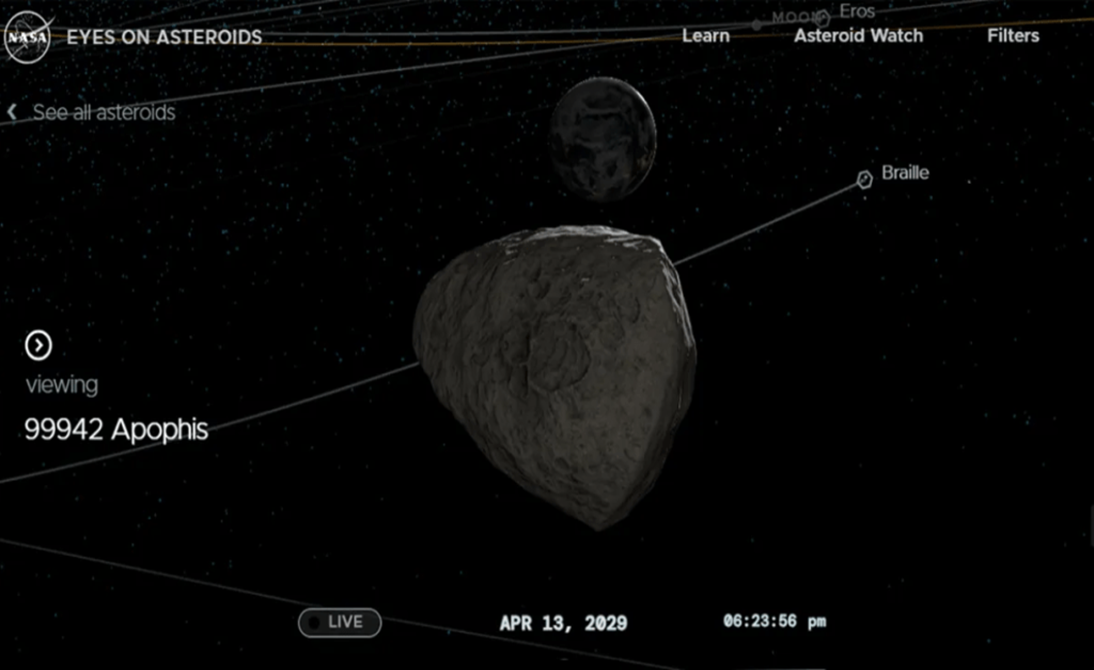- Courses
- GS Full Course 1 Year
- GS Full Course 2 Year
- GS Full Course 3 Year
- GS Full Course Till Selection
- MEP (Mains Enrichment Programme) Data, Facts
- Essay Target – 150+ Marks
- Online Program
- GS Recorded Course
- NCERT (Recorded 500+ Hours)
- Polity Recorded Course
- Geography Recorded Course
- Economy Recorded Course
- AMAC Recorded Course
- Modern India, Post Independence & World History
- Environment Recoded Course
- Governance Recoded Course
- Science & Tech. Recoded Course
- International Relations and Internal Security Recorded Course
- Disaster Management Module Course
- Ethics Recoded Course
- Current Affairs Recoded Course
- CSAT
- 5 LAYERED ARJUNA Mentorship
- Public Administration Optional
- ABOUT US
- OUR TOPPERS
- TEST SERIES
- FREE STUDY MATERIAL
- VIDEOS
- CONTACT US
ISRO’s Planetary Defense Plan
ISRO’s Planetary Defense Plan
13-08-2024

- In July, 2024 Indian Space Research Organisation (ISRO) Chairman S Somanath said that “we should be able to go and meet” the asteroid Apophis when it passes by Earth at a distance of 32,000 km in 2029.
- The ISRO is taking its first steps into planetary defense, an area it has not previously explored. This could be achieved through an independent ISRO mission or a collaboration with other space agencies. However, “it is yet to be decided in what way [ISRO] should participate”.
Apophis: An alarming asteroid
- When Apophis was discovered in 2004, scientists thought there was a 2.7% chance of a collision with Earth-the highest probability of any large asteroid hitting Earth in the recent past.
- Initial observations showed that if not in 2029, Apophis could hit Earth in 2036 or 2068.
- A collision with Earth could cause large-scale damage.
- However, subsequent observations showed these initial fears to have been unfounded.
- This is close enough to be visible to the naked eye, and at a distance at which some communication satellites operate.

Apophis Asteroid
- Apophis is about 340 meters wide.
- The orbit of Apophis crosses the orbit of Earth. It completes an orbit around the Sun in a little less than one Earth year (about 0.9 years). This places it in the group of Earth-crossing asteroids known as ‘Atens,’ those with orbits smaller in width than the width of Earth's orbit.
- Apophis is classified as an S-type, or stony-type asteroid made up of silicate (or rocky) materials and a mixture of metallic nickel and iron.
- It is a remnant from the early formation of our solar system about 4.6 billion years ago.
- It originated in the main asteroid belt between Mars and Jupiter.
- Over millions of years, its orbit was changed primarily so that it now orbits the Sun closer to Earth. As a result, Apophis is classified as a near-Earth asteroid, as opposed to a main-belt asteroid.
Asteroid:
|
What are the possible incoming threats from space?
- Thousands of Asteroids enter the Earth’s atmosphere every day. Most are very small and burn up in the atmosphere due to friction and some of the larger ones burn and show up as fireballs in the sky.
- In some cases, unburnt fragments make it to surface, although they are not large enough to cause much damage.
- However, asteroids can sometimes cause damage.
- In 2013, a 20-metre-wide asteroid entered the atmosphere and exploded about 30 km above a Russian town, releasing energy.
- While most of this energy was absorbed by the atmosphere, shock waves travelled to the ground, flattened trees, damaged buildings, and injured 1,491 people.
- Worryingly, the asteroid was detected only after it entered the atmosphere.
- This was in part because it came from the direction of the Sun, and was hidden by its glare.
- Planetary defense programme aim to track and mitigate such threats.
Planetary defense programme: From Sci-Fi to reality
- NASA launched a spacecraft that crashed into an asteroid named Dimorphos, and changed both its shape and its trajectory.
- Dimorphos posed no threat to Earth, and was circling the Sun some 11 million km away from our planet.
- The Double Asteroid Redirection Test spacecraft, or DART, was launched in 2021 and intentionally impacted Dimorphos in September 2022, successfully altering its orbit by crashing into it.
- Asteroids are yet to be studied in detail, and very few missions have been dedicated to them.
- This is why the approach of Apophis has generated huge interest among space agencies around the world.
- NASA has already redirected one of its Space-craft, one that previously studied the asteroid Bennu, to track Apophis.
- After successfully completing its mission to gather a sample of asteroid Bennu in September 2023, OSIRIS-REx (Origins, Spectral Interpretation, Resource Identification, and Security – Regolith Explorer) was renamed OSIRIS-APophis EXplorer (OSIRIS-APEX).
- The spacecraft was sent to study Apophis during the asteroid's 2029 Earth flyby.
|
Asteroid Bennu:
|
ISRO’s intention to join such an endeavour displays its growing confidence in taking on newer challenges, and contributing proactively to global space objectives. It is also a reaffirmation of its continuing evolution into a well-rounded space agency, with capabilities that match the best in the world.




